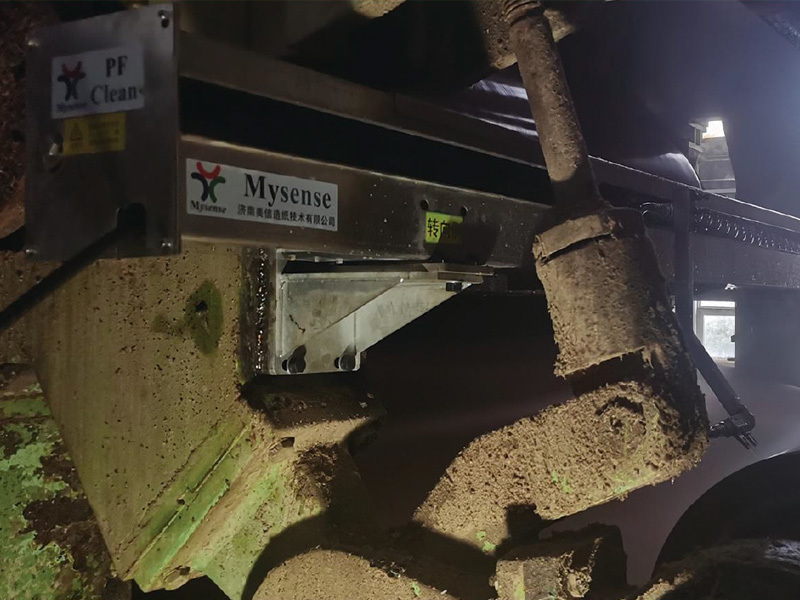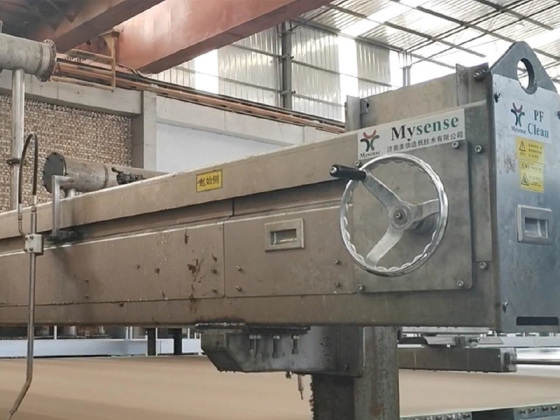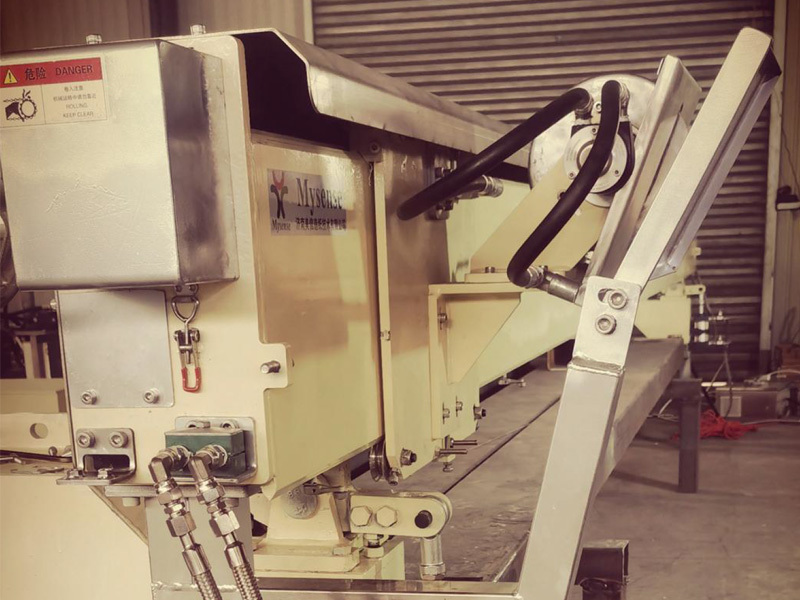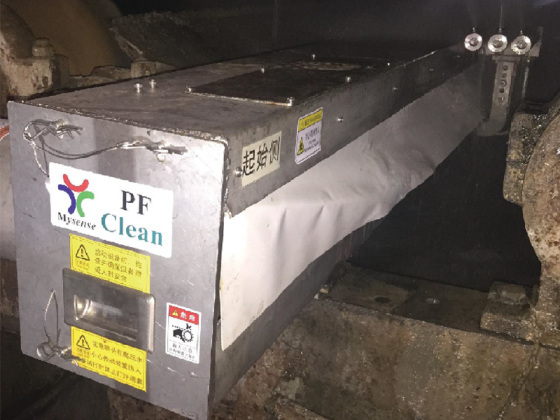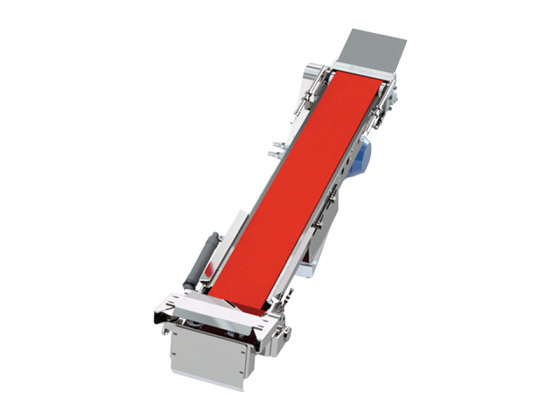Driving Innovation: The Evolution of Vacuum Roll Technology in Manufacturing
Published on:
2025-04-10 10:40
Driving Innovation: The Evolution of Vacuum Roll Technology in Manufacturing
Table of Contents
- Introduction to Vacuum Roll Technology
- Historical Overview of Vacuum Roll Systems
- Mechanical Principles Behind Vacuum Roll Technology
- Key Applications of Vacuum Roll Technology in Manufacturing
- Advantages of Utilizing Vacuum Roll Systems
- Future Trends in Vacuum Roll Technology
- Challenges and Limitations of Vacuum Roll Systems
- Conclusion: The Future of Manufacturing Innovation
- FAQs about Vacuum Roll Technology
Introduction to Vacuum Roll Technology
In the rapidly evolving landscape of manufacturing, **vacuum roll technology** has emerged as a significant innovation. This technology leverages the principles of vacuum suction to enhance the efficiency and precision of manufacturing processes. The introduction of vacuum roll systems has drastically transformed traditional methodologies, offering possibilities previously thought unattainable.
Manufacturers are constantly seeking ways to optimize production, minimize waste, and improve product quality. As a result, understanding the evolution and mechanisms of vacuum roll technology is essential for industry stakeholders. This article provides a comprehensive exploration of vacuum roll technology, its historical context, mechanical principles, diverse applications, and future potential.
Historical Overview of Vacuum Roll Systems
The evolution of vacuum roll technology can be traced back to the early 20th century when the concept of vacuum manipulation started gaining traction. Initially developed for industrial cleaning purposes, the principles of suction soon found their application in various manufacturing processes.
In the 1960s, the introduction of automated systems marked a significant turning point for vacuum roll technology. These systems allowed for higher efficiency and were quickly adopted in industries such as textiles and packaging. Over the decades, advancements in materials and engineering have led to the development of more sophisticated and versatile vacuum roll systems.
Key Milestones in the Development of Vacuum Roll Technology
- **1960s**: Initial adoption of vacuum technology in textile manufacturing.
- **1980s**: Integration of vacuum rolls in packaging, leading to increased production speeds.
- **1990s**: Advancements in sensor technology enhance the precision of vacuum systems.
- **2000s**: Expansion into various industries including automotive and electronics.
- **2020s**: Focus on sustainability and energy efficiency drives innovation in vacuum roll design.
Mechanical Principles Behind Vacuum Roll Technology
Understanding the mechanical principles of vacuum roll technology is critical for appreciating its applications in manufacturing. At its core, vacuum roll technology operates on the principle of creating a pressure differential between the atmosphere and the inside of the vacuum roll.
Functionality of Vacuum Rolls
Vacuum rolls consist of a cylindrical drum equipped with a vacuum chamber. When the vacuum is activated, a pressure differential is created that allows materials—such as films, sheets, or textiles—to adhere to the surface of the roll. This adhesion facilitates various processes, including:
- **Conveying**: Transporting materials seamlessly through production lines.
- **Cutting**: Holding materials in place for precise cutting without damaging the product.
- **Forming**: Assisting in the shaping of materials to achieve desired specifications.
Components of Vacuum Rolls
1. **Drum**: The main body that houses the vacuum chamber and serves as the surface for material adhesion.
2. **Vacuum Pump**: The device that creates the necessary pressure differential by removing air from the chamber.
3. **Control Systems**: Electronics that regulate the vacuum levels and monitor system performance.
Key Applications of Vacuum Roll Technology in Manufacturing
Vacuum roll technology is utilized across a wide array of industries, significantly improving production efficiency and product quality. The most prominent applications include:
Textile Manufacturing
In the textile industry, vacuum rolls are essential for processes such as dyeing and finishing. They allow for consistent material handling, ensuring that fabrics remain flat and free of wrinkles during processing.
Packaging Solutions
Vacuum rolls are widely used in packaging applications, particularly in the food and beverage sectors. They facilitate the packaging of products in vacuum-sealed environments, extending shelf life and preserving freshness.
Electronics Manufacturing
In electronics, vacuum roll technology aids in the assembly of delicate components. The ability to hold materials securely in place minimizes the risk of damage, ensuring high-quality production.
Automotive Industry
The automotive sector utilizes vacuum rolls for processes such as laminating and assembling parts. The precision offered by vacuum technology contributes to tighter tolerances and better overall fit and finish.
Advantages of Utilizing Vacuum Roll Systems
Implementing vacuum roll technology in manufacturing processes presents numerous advantages:
Enhanced Efficiency
Vacuum rolls streamline various production tasks, significantly reducing cycle times. The quick material handling provided by vacuum systems allows manufacturers to meet increasing demand without compromising quality.
Waste Reduction
By ensuring precise material placement and minimizing the risk of damage during processing, vacuum rolls help reduce waste. This not only enhances sustainability but also contributes to cost savings.
Improved Product Quality
The ability to hold materials securely in place during production processes contributes to higher quality outputs. Manufacturers benefit from fewer defects and greater consistency in product specifications.
Versatility Across Industries
One of the standout features of vacuum roll technology is its versatility. It can adapt to various materials and processes, making it a valuable asset in numerous manufacturing sectors.
Future Trends in Vacuum Roll Technology
As technology continues to advance, the future of vacuum roll systems looks promising. Key trends shaping the evolution of vacuum roll technology include:
Integration with Smart Manufacturing
The rise of Industry 4.0 and smart manufacturing is paving the way for more intelligent vacuum roll systems. Integration with IoT (Internet of Things) technologies will enable real-time monitoring and data analysis, enhancing performance and predictive maintenance.
Focus on Sustainability
As industries strive for sustainability, vacuum roll technology is evolving to incorporate eco-friendly materials and energy-efficient designs. Manufacturers are prioritizing systems that reduce environmental impact while maintaining high performance.
Customization and Modularity
Future advancements will likely see increased customization options for vacuum roll systems. Modular designs that allow manufacturers to tailor solutions to specific production needs will become more prevalent.
Challenges and Limitations of Vacuum Roll Systems
While vacuum roll technology offers numerous advantages, it is not without challenges:
Maintenance Requirements
Vacuum systems require regular maintenance to ensure optimal performance. Failure to perform routine checks can lead to inefficiencies and increased downtime.
Initial Investment Costs
The initial costs of implementing vacuum roll technology can be significant. Manufacturers must weigh these costs against the long-term benefits and savings.
Conclusion: The Future of Manufacturing Innovation
Vacuum roll technology represents a significant advancement in manufacturing, driving efficiency, quality, and sustainability. As industries continue to embrace innovation, vacuum roll systems will play a crucial role in shaping the future of production processes. By understanding the evolution, applications, and challenges of this technology, manufacturers can strategically position themselves to leverage its benefits and remain competitive in an ever-evolving landscape.
FAQs about Vacuum Roll Technology
1. What is vacuum roll technology?
Vacuum roll technology utilizes vacuum suction to hold materials in place during various manufacturing processes, enhancing efficiency and precision.
2. What industries use vacuum roll systems?
Vacuum roll systems are utilized in textiles, packaging, electronics, automotive, and many other manufacturing sectors.
3. What are the main advantages of vacuum roll technology?
The main advantages include enhanced efficiency, waste reduction, improved product quality, and versatility across different manufacturing applications.
4. Are there challenges associated with vacuum roll technology?
Yes, challenges include the need for regular maintenance and higher initial investment costs.
5. What are future trends in vacuum roll technology?
Future trends include integration with smart manufacturing technologies, a focus on sustainability, and increased customization options.
Latest News



